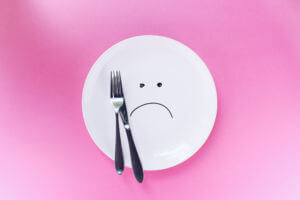By Sintya Barreiro, Tutor and Janal Daniel, Education Coordinator, CLE Davie

Often, numbers are used as an indicator of wellness which can also be misleading. Whether it’s the number on the scale, how many calories are in our foods and drinks, or our BMI—focusing on numbers is stressful. Adhering to BMI scale to live healthily should not be the sole indicator. A lower weight does not necessarily indicate good health either.
Food Independence
Year one at CLE is the first time many students can choose what foods they want to purchase and what meals they want to consume. Students are generally more inclined to binge on junk food and inappropriate meal times instead of allowing for proper nutrition and digestion to take place. This is partly due to time constraints, lack of knowledge, habitual tendencies and laziness. Eating smaller meals throughout the day can help your metabolism to work well for your digestion, unlike eating meals later in the day or skipping them all together. Try not to eat after 8 pm – the closer one eats to bedtime, the harder it’ll be for your body to properly digest this food. Due to many contributing factors, It is easy for college students to eat microwavable Mac-n-cheese late at night, but it won’t sustain or nourish the body. Having nuts, fruit or yogurt can make for a healthier and more effective alternative to snacking.

Meal Planning and Meal Budgeting
Look for Bogo coupons. Planning out your meals for the week can offset impulse buying and eating as well as bad decision making. Never go grocery shopping on an empty stomach because you’ll be tempted to buy whatever looks good without reason, which tends to be the unhealthy stuff. Staying away from purchasing junk food and bags of empty calories will reduce your grocery bill. Planning to attend Farmer’s Markets can help you discover better savings and healthier produce via local farms where you can also learn about how your food was grown.
Lifestyle at CLE
CLE Davie prioritizes eating home-cooked or quickly prepared meals that contain some element of nutrition. We explore these concepts through cooking groups, individual ILS appointments, grocery groups and dine-in activities. We encourage students to choose their own recipes and follow them. For example, during any CLE function, we ensure to purchase juices or teas instead of sodas that are loaded with sugar and artificial sweeteners. CLE Davie also tries not to store any junk food or unhealthy snacks for students at the center.
Importance of Hydration and Sleep

It is imperative that you consume enough water every day. Your body uses water to maintain temperature, remove waste and lubricate your joints. Additionally, every cell in your body uses water to function. You can find water in many things like fruits and vegetables and use that to offset how many glasses you consume a day, since the recommended amount can be daunting. You can check your hydration levels by looking at the color of your urine. A darker mustard or golden tone indicates lower levels of hydration, while light yellow to clear urine indicates adequate hydration.
Importance of Physical Activity
Physical activity is an integral player in the health of your cardiovascular system, your mental wellness, stress and anxiety relief. It boosts your energy and mood while helping you feel more relaxed which will, in turn, help your sleep cycle. It’s great for weight management and reduces your blood pressure. Try to get at least a half hour to an hour of physical activity a day.
Sintya Says
…and now some tips from our Master’s nursing student and tutor, Sintya Barreiro
Sintya says opting for plain popcorn kernels instead of microwavable popcorn can make for a healthier choice. Also, stick to darker leafy greens like romaine and spring mix lettuce, broccoli, kale and spinach because they contain more vitamins and less iron. Sintya also says if you really enjoy sugary cereals, you can mix half high sugar cereal and half low sugar cereal to lessen your sugar intake while maintaining a tasty morning bowl. While you’re at it – instead of oily and salty chips – swap them our for homemade kale chips! It only takes just a drizzle of olive oil, a sprinkle of salt and pepper – pop them in the oven and ta-da! You got yourself a tasty treat.










This was a great read. I liked the addition of “Sintya says”, very useful tips, especially the air fryer (play with temp settings and you can make almost anything in it). One thing that I’d like to add is for those struggling with eating healthy, especially those that can’t eat multiple smaller meals throughout the day for whatever reasons (for me it’s life in general that keeps me busy). I would recommend intermittent fasting, because you can be a bit more lax with what you eat if you’re not able to get a healthy meal. In general you’re restricting overall calories consumption and having some quick fast food every now and then will not push you over the edge. My personal routine is a 16 hour fast, and an 8 hour window to eat. I eat lunch around 1-2pm and dinner around 7-8pm. Now before someone goes and says “oh that’s not healthy, that’s bad for the body”, it actually isn’t. Multiple religious groups practice this same concept and they’ve been doing it for generations. They look at it as a way to cleanse the body of impurities. Since this is a masters program, you all probably know about the migrating motor complex. This is initiated during fasting with an increase in Motilin. This helps move undigested material from the stomach and small intestine to the colon. This also helps prevent unwanted bacterial migration from the colon into the small intestine. This pushes any left over residue along and out of the body, essentially helping “cleanse” the body.